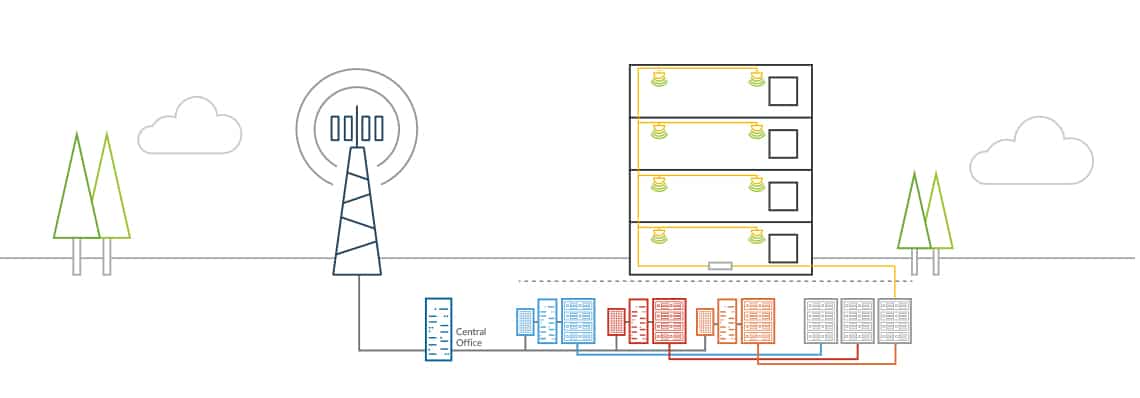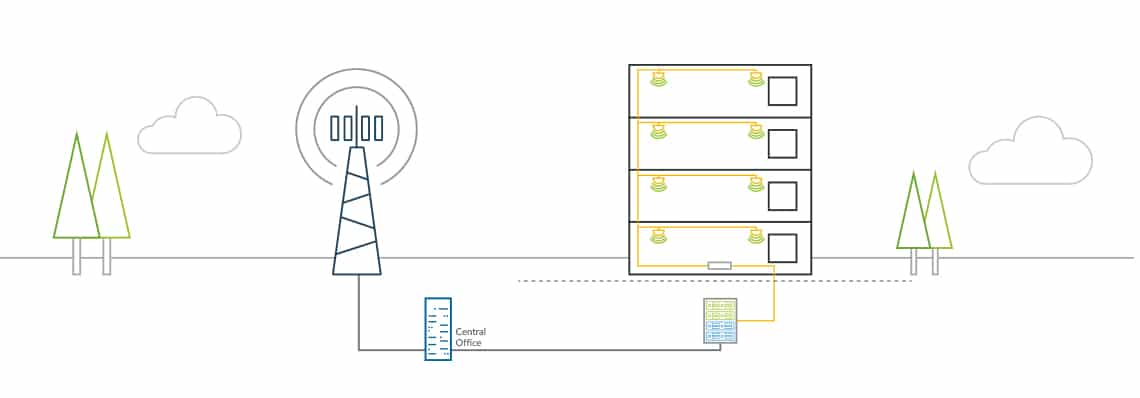In-Building Wireless Networks
Solving the In-Building Challenge
The highest demand for mobile connectivity and capacity is inside buildings – with more than 80% of mobile use happening indoors.
But cellular signals from outdoor macro networks don’t penetrate buildings well, especially with building materials like Low-E glass, which causes significant signal loss.
Cellular signals from outdoor networks don’t penetrate buildings well:

To solve this problem, carriers and enterprises use Distributed Antenna Systems (DAS) – a network of antennas connected to a base station that provides wireless services throughout the building.
Most DAS solutions are designed to support multiple carriers, enabling improved services for all wireless carriers on the same infrastructure. This is typically referred to as ‘neutral host’.
The Base Station Challenge
While the antenna infrastructure can support multiple carriers, the traditional base stations that feed the DAS cannot, requiring each carrier to bring their own base stations to the building.
Also, in many cases outdoor base stations are used indoors. These base stations are not intended for indoor use – they are cumbersome, and need to be attenuated for use with an indoor DAS. With every carrier providing their own set of base stations and attenuators, the building’s communications room quickly fills up.
Multiple base stations are required to feed a neutral-host DAS:

The Solution
Traditional base stations can be replaced with a mobile edge cloud.
Mobile edge clouds perform baseband processing on standard, off-the-shelf servers, eliminating the need to use outdoor base stations indoors.
It can serve all carriers on a single, neutral-host platform, replacing a room full of equipment with a single rack.
A mobile edge cloud replaces the traditional base station:



